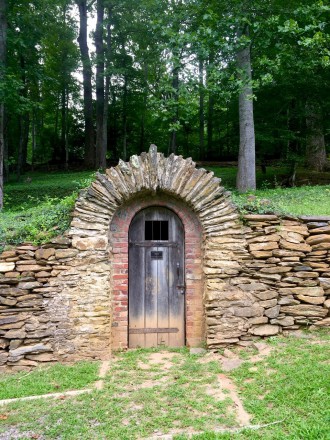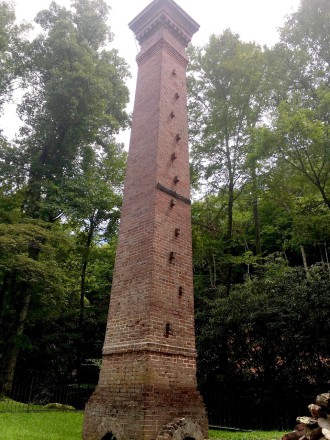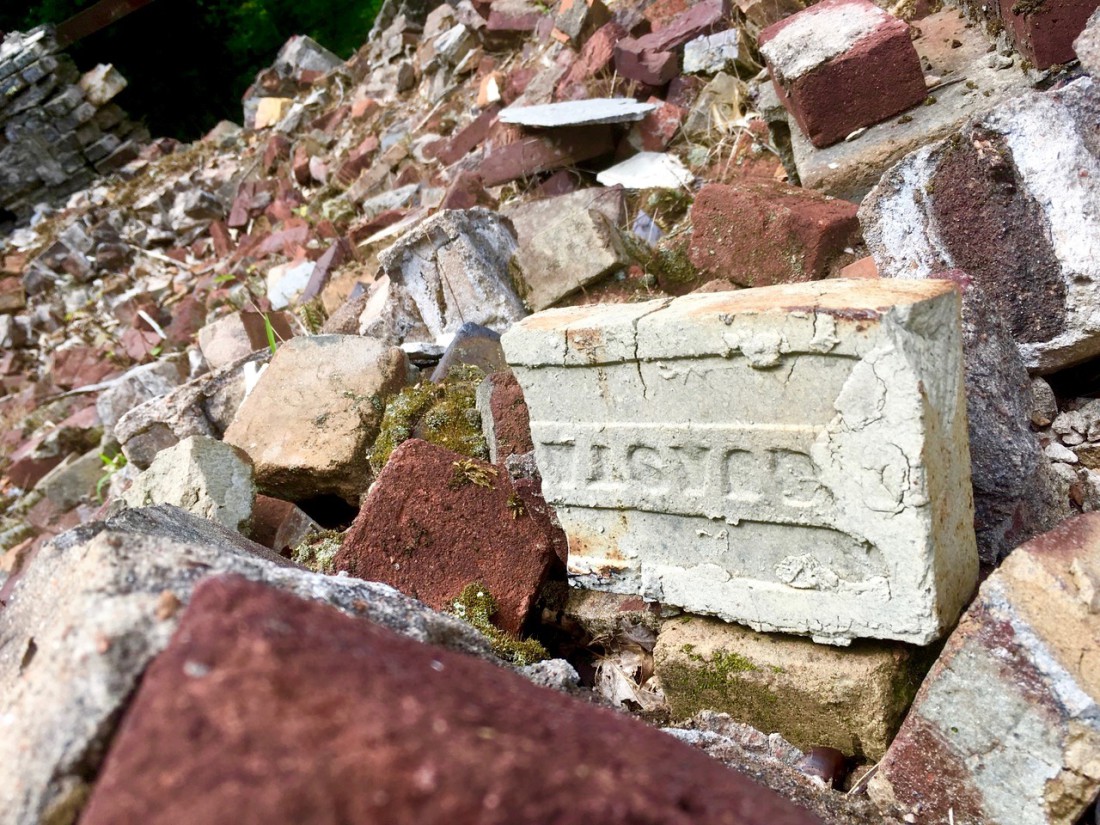Many are lured to Buncombe County by its rich cultural history, epitomized by the Biltmore Estate, an architectural wonder built for the family of George W. Vanderbilt from 1889-1895. Upon entering the vast mansion, visitors encounter magnificent vaulted tiled hall ceilings. What they may not realize, however, is the designer of those ceilings and others on the estate is also responsible for iconic vaulted tile ceilings and arches in libraries, train stations and restaurants across the country. Most also don’t know that the artist’s body lies in the Basilica of St. Lawrence in downtown Asheville.
Rafael Guastavino was born in Valencia, Spain, and studied architectural engineering in Barcelona alongside more well-known contemporaries like Antoni Gaudí. It was Guastavino, however, who modernized the classic Spanish architectural technique of using lightweight, glazed tiles to create self-supporting arches.
From the Old World to the new

Guastavino was awarded the title of master builder in his home country, but despite his early success there, in 1881 he immigrated with his son, also named Rafael, to New York City to join the emerging industrial development field in the United States. During the Gilded Age, architecture was at a crossroads in America. The rapid industrialization of the country’s urban areas led to many developments in building, with an emphasis on steel and concrete production, yet many still craved the traditional grandeur of the Old World.
Defying contemporary convention, Guastavino’s designs also surpassed common practices in many ways. In addition to their beauty, his arches were more cost-effective than other means of arch building. Embedding thin glazed tiles in mortar eliminated the need for scaffolding. Workers could rest upon the work they had already completed, even though many of the resulting vaults and arches were a mere 2 inches thick. In addition, his works were impervious to rot and mold and were fireproof — a huge advantage, as large-scale fires had devastated many urban areas in the 19th century.
The fact that his designs could offer protection against fire helped Guastavino land his first large commission in the United States. The McKim Building of the Boston Public Library, which was completed in 1895, was intended to hold many rare books and personal papers. The appeal of a fireproof construction outweighed the risk of hiring a relatively unknown designer, and so Guastavino began to make his name in America by designing the vaulted ceilings of the marquee library.
A taste of Spain in WNC
A commission to design decorative tile vaulting at the Biltmore Estate led Guastavino to purchase land in present-day Black Mountain, where in 1895 he built his personal estate, Rhododendron. In addition to a sprawling house that was known to locals as the Spanish Castle, Guastavino constructed multiple kilns for producing his tiles, as well as a large cellar to hold the wine and cider his property produced.
By the time he settled into Rhododendron with Rafael Jr. and his second wife, Francesca, Guastavino had become one of the nation’s most renowned architectural engineers. His company, the Guastavino Fireproof Construction Co., received commissions for such notable projects as Grand Central Terminal in New York City and St. Paul’s Chapel at Columbia University.
Guastavino’s notoriety was such that other architectural firms would prepare incomplete plans, with blank spaces simply marked “Guastavino here,” connoting great confidence in his work, notes Anne Chesky Smith, director of the Swannanoa Valley Museum in Black Mountain. The museum is currently hosting Palaces for the People: Guastavino and America’s Great Public Spaces, a traveling exhibit about his work and later life.
The designer’s estate in Black Mountain did not feature the glazed tiles for which he had become so famous, but was constructed entirely of wood from the property. In the mid-20th century, the house was demolished after being severely damaged by fire. Only the estate’s wine cellar, one of the few surviving structures on the original estate, used Guastavino’s trademark tile.
The ruins of the Rhododendron estate stand today on the grounds of Christmount, a conference center owned by the Disciples of Christ. Helen Johnson, retired director of Christmount, gave Xpress a guided tour of the grounds and ruins. A 60-foot-tall chimney looms over the collapsed dome of one of two kilns, in which Guastavino used local red clay to manufacture tiles for projects around the country. The architect also purchased land in the middle of the state, which he mined for white clay. This discovery surprised Chesky Smith when she was working on the exhibit. “It didn’t really occur to me that he would need different kinds of clay for different bricks, but of course,” she says.
Guastavino also made his mark in Western North Carolina by helping design the Basilica of St. Lawrence in downtown Asheville, often said to be the largest freestanding elliptical dome in North America, with no wood or steel beams supporting the span. Construction began in 1905 and was completed in 1909. When Guastavino died in 1908, his body was interred in the crypt beneath the dome. His son completed the work after his father’s death.
Legacy of visionary design

The exhibit at the Swannanoa Valley Museum presents many details about Guastavino’s life and work. “It’s certainly the largest exhibit we’ve had,” says Chesky Smith. Originally designed for the Boston Public Library and funded by a grant from the National Endowment for the Humanities, Palaces for the People outlines the contributions Guastavino made to American architectural design.
After the original exhibit in Boston closed in January 2014, curators donated the 10-foot-tall panels to Christmount, where their prohibitive size relegated the displays to a climate-controlled storage shed. Thanks to fundraising and ingenuity on the part of several locals, notably the novelist David Madden, the Swannanoa Valley Museum acquired the digital rights to the panels and had them reprinted at a more manageable 8 1/2 feet tall.
For prospective visitors or Guastavino enthusiasts who can’t make it to Black Mountain before December, the exhibit will be traveling, although the next location is yet to be determined. Other sites in North Carolina have expressed interest, as have museums in Barcelona, Spain. In addition, Christmount holds Guastavino’s original plans for a chapel intended for the property, but never built. Eventually, the center hope to construct the chapel atop a large basement, which could permanently house the exhibit in a dedicated Guastavino museum.
As Chesky Smith points out, though, “We have a lot of stuff that came from his estate that will not travel with it and that wasn’t in the original exhibit.” These items include a carved fountain, the bell from Guastavino’s home tower and his parlor set, as well as assorted curios and examples of decorative tiles made at the property during design experiments carried out by the father and son.
The Swannanoa Valley Museum is open 10 a.m. to 5 p.m., Tuesday through Saturday, and the exhibit runs until Saturday, Dec. 2. Admission is by donation, and guided introductions for groups can be arranged by calling ahead to schedule. Christmount is open during daylight hours, although to obtain a paper copy of the walking tour guide, visitors must stop by the office, which is open from 8:30 a.m. to 4:30 p.m. daily. The Basilica of St. Lawrence can be visited 7:30 a.m. to 5 p.m. weekdays for self-guided tours. For more information, visit saintlawrencebasilica.org.




Before you comment
The comments section is here to provide a platform for civil dialogue on the issues we face together as a local community. Xpress is committed to offering this platform for all voices, but when the tone of the discussion gets nasty or strays off topic, we believe many people choose not to participate. Xpress editors are determined to moderate comments to ensure a constructive interchange is maintained. All comments judged not to be in keeping with the spirit of civil discourse will be removed and repeat violators will be banned. See here for our terms of service. Thank you for being part of this effort to promote respectful discussion.